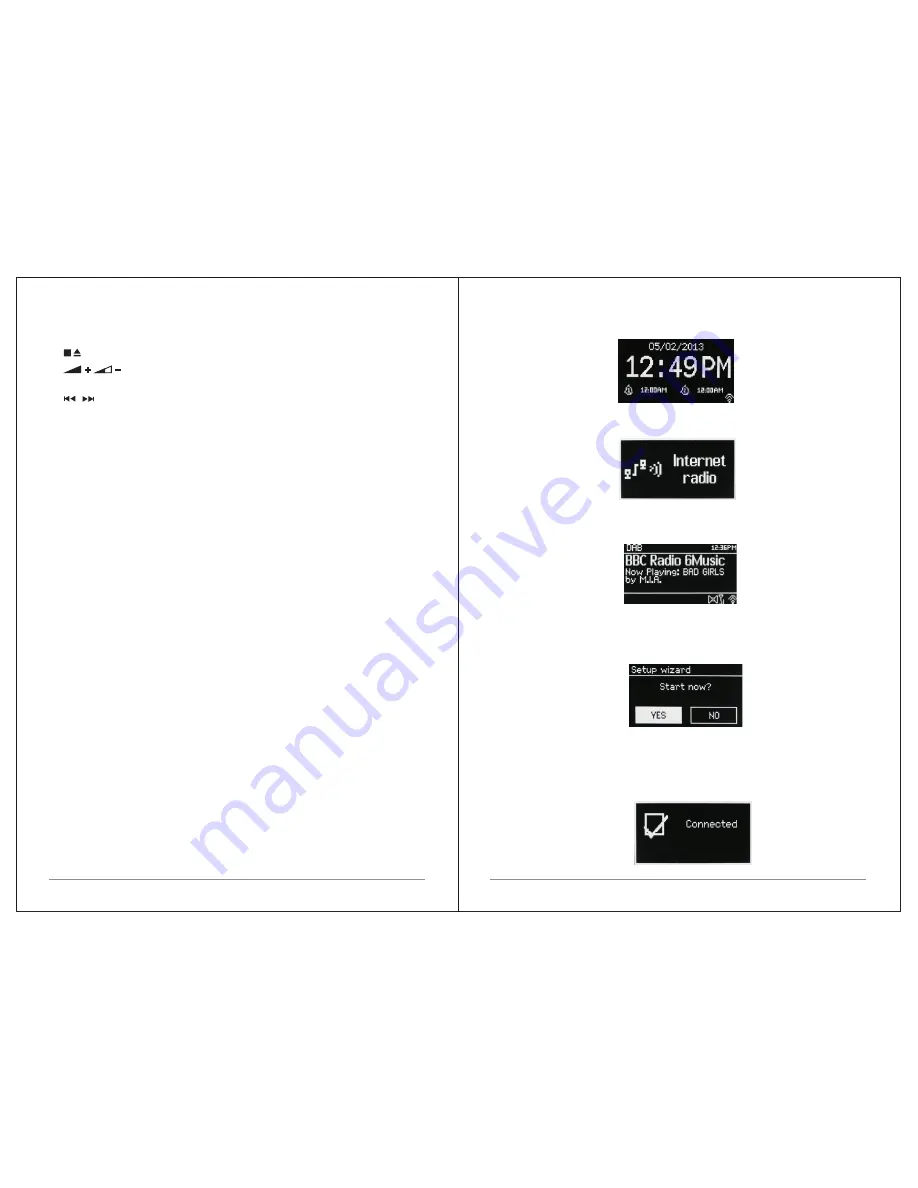
9 of 38
The
Standby screen
shows
the
time
,
date
and
any
active
alarm
times
.
A
splash screen
is
displayed
for
each
mode
.
Press
source
to
cycle
through
the
listening
modes
.
Now playing screens
show
information
about
the
audio
source and track
now playing, where available.
Dialogue screens
are
shown
to
allow
the
user
to
change
settings
.
They
vary
in
complexity
from
simple
Yes
/
No
options
up
to
the
scrollable
network
passphrase
input
screen
.
The selected option is highlighted with a yellow background. Dialogue
screens mark the currently saved setting with an asterisk (*).
Error/Information screens
give specific messages for a few seconds, then
change automatically to the next screen.
2.
:
Press to play / pause the playing under internet radio, Spotify, My
music
,
BT mode
and
CD
mode
.
Auto
Scan
stations
under
FM
mode.
3. Press to stop CD playback, press again for CD ejection.
4. : Press to volume up or volume down in playing screen. Press
up or down to select menu for settings.
5. / : Station title forward/backward: In playing screen, press right or left
to select FM/DAB/internet radio stations or CD tracks.
6.
P: Preset:
To store an FM/DAB preset, press and hold Preset until the
display shows the Save preset screen. Select one of the 20 presets to save
the currently playing station
.
To
select
a
preset
,
press
Preset
briefly
,
then
select
one
of
the
listed
Preset
stations
.
When
a
preset
station
is
playing
,
it
shows
(*1, *2
etc
)
in
the
bottom
middle
of
the
screen.
7.
OK/MUTE
:
Long
press
the
button
to
switch
normal
playing
screen
image
to
full
screen
slide
show
image
.
8
.
PRG
:
for
CD
programme
,
adjust
the
different
playback
sequences to play
tracks.
9
.
SHUF(Shuffle)
:
with
a
CD
playing
,
briefly
press
to
play
the
tracks in
random order. Press the Shuffle button a second time
to cancel shuffle play.
10
.
REP
(
Repeat
):
With a CD playing, press once to repeat the
track being
played
;
Press
twice
to
repeat
the
entire
disc
;
Press
again to cancel the
Repeat mode or press stop. Repeat 1 can not
be used in conjunction with
Shuffle.
2.4
Screens
The screen shows various menus, dialogues and displays as described
below. There are basically six types of screen:
Ÿ
Standby (clock)
Ÿ
Splash (mode)
Ÿ
Now playing
Ÿ
Dialogue
Ÿ
Error/Information
Ÿ
Menu
Where there is more text than can be fitted onto a screen, the text
automatically scrolls right to left after a brief pause.
8 of 38
u
;







